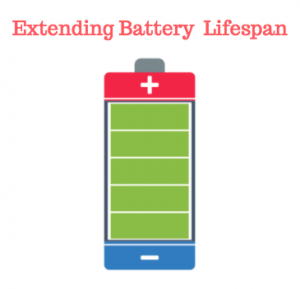 Lead acid batteries are considered to be the most economical batteries. That’s the reason you’ll find them anywhere from cars to motorcycles, tractors to golf carts, and from boats to home solar systems. Another reason lead-acid batteries are commonly used in their construction.
Lead acid batteries are considered to be the most economical batteries. That’s the reason you’ll find them anywhere from cars to motorcycles, tractors to golf carts, and from boats to home solar systems. Another reason lead-acid batteries are commonly used in their construction.
Unlike Lithium Ion batteries, for instance, lead acid batteries have a simple structure. They’re also very tolerant to overcharging and can be left on trickle charge for extended periods. The only problem with this battery type is that they’re a bit bulkier.
What’s more is that they can easily go dead when left discharged for a long time. In this post, i’ll talk about the importance of properly maintaining your batteries and whether the so-called Epsom salt battery myth is actually a myth.
Lead acid batteries are the most recycled products in the world, by the way, and as you probably know already, some users claim that adding Epsom salt to a dead battery will revive it. You’ll find out later whether that is true or not.
First, let’s take a look at the importance of battery maintenance!
The Importance Of Battery Maintenance
Batteries can be divided into two categories regarding maintenance: maintenance-free and non-maintenance free. AGM and gel batteries are a couple of examples of battery types that do not require maintenance. They are considered as sealed batteries and do not contain the same amount of liquid that regular batteries do.
They do hold a small amount of fluid, but just enough to allow electrolytes to flow. Unlike regular batteries, sealed batteries do not require you to add water from time to time for maintenance. They are designed to withstand varying conditions and can even endure non-ventilated environments.
They also tend to charge faster and are more resistant to corrosion. This is one reason they are often found in home solar or wind power systems. However, unlike flooded batteries (another term for non-maintenance free batteries), sealed batteries usually do not last as long.
Flooded batteries, on the other hand, are also known as wet-cell batteries. They are considered to be the closest in terms of design to the Daniell Cell invented by John Frederic Daniell in 1836.
The main difference of flooded batteries is that they contain liquid. This is also the main drawback of flooded batteries, in that the correct level of fluid must be maintained. They must also be positioned correctly, or the acid inside might spill. Moreover, the liquid inside can either evaporate or freeze, which can affect battery life.
Despite these drawbacks, flooded batteries are still the most popular choice when it comes to backup power, particularly in grid energy storage. If this is your battery type of choice for most of your energy storage needs, you need to understand the importance of proper battery maintenance.
You can expect batteries to function efficiently when they’re new. As time goes by, however, they will show signs of inconsistency, and eventually, failure. One reason you would want to make sure your battery is well maintained is that premature battery failure could mean additional cost. Emergencies happen all the time, but if you could prevent one, do so.
This won’t be a big deal if you’re only talking about battery failure for a home solar system. But if you’re running a business, and suddenly the power goes out due to battery failure, then that would not only mean additional cost for battery replacement, but it could also mean thousands of dollars.
Now, what if you’re using the battery for healthcare applications? A single power outage would mean the loss of precious life! Of course, you may or may not be in the same situation, but whatever way you are using batteries, you need to realize how important it is to maintain them if indeed they are not maintenance-free.
But then again, even maintenance-free batteries need to be checked and taken care of in order for them to function at the optimal.
Regular Inspection For Extending Battery Life
 Both flooded batteries and sealed batteries (maintenance-free) need regular maintenance. You read that right. Even maintenance-free batteries need a level of maintenance, although not the same that you would give a flooded battery. You need to give them some tender love and care if you want to prolong their life.
Both flooded batteries and sealed batteries (maintenance-free) need regular maintenance. You read that right. Even maintenance-free batteries need a level of maintenance, although not the same that you would give a flooded battery. You need to give them some tender love and care if you want to prolong their life.
Here is the “BATTERY INSPECTION” below.
Protecting Yourself
One thing you need to remember is that batteries are to some degree a hazard. When attempting to check or care for one, you need to make sure you are wearing proper protection for your hands and face.
Visual Inspection
Examining the appearance of the battery on a regular basis is crucial to making sure you don’t miss any problem when it occurs. Always start by checking for cracks and similar damages on the container. Also make sure that the connections are clean, free of corrosion, fluids, and dirt. Remove any dirt on the battery the moment you see them.
This will make sure they don’t accumulate and eventually clog the connections or cause corrosion. If upon visual examination you notice damages, repair or replace the battery immediately. Leaving a damaged battery attached to your equipment may harm the system and even cause electrical or fire hazards.
Leaks And Spills
Most flooded batteries are designed not to leak. If they do leak, it’s probably a result of the container having been damaged. Leaks from batteries can cause harm, not only to the battery itself but to humans, most especially.
Once you see fluid leaking from the battery, neutralize the leakage first by pouring baking soda onto the spill, especially if nickel-cadmium or lead-acid is involved. Once the spill has been neutralized, it’s important to dispose of the battery immediately.
Cables And Connections
Another way to make sure your batteries are working efficiently is by looking for loose cable connections or damaged parts. Cables should be intact to ensure proper battery function. If you notice cables that are frayed or broken, repair or replace them immediately because they can be extremely hazardous.
Removing The Battery
There are instances when you need to remove the battery for proper diagnosis, especially when visual inspection is not enough. In this case, you’ll need to remove it from its tray and set it on a smooth surface.
From here you can already perform your usual inspection, checking for loose connections, clogged dirt, cracks, or damages. Before you reconnect the cables and return the battery to its tray, however, make sure you spray the terminals with some protectant to help prevent the buildup of corrosion.
BATTERY CARE
A battery dies when the active material present in the plates loses its ability to support a discharge current. There are several factors that lead to a battery eventually failing. Over time, the plate of the battery sheds, causing the battery to “age.” This aging is a result of sediments forming and building up at the bottom of the case.
This buildup eventually causes a short and kills the battery. Most batteries prematurely fail, however, not as a result of normal aging, but by lack of maintenance. For instance, when water needed for normal recharging evaporates due to high temperatures, the battery could fail and die. There are several ways you can take care of your battery so that it doesn’t age fast or die prematurely.
Weather Protection
The environment is a huge factor that affects battery life. A place with very hot climate, in particular, is the harshest environment for a battery. There isn’t a lot you can do to keep your battery from being ravaged by the hot weather, but you can do something to keep it in its best shape as much as possible.
Filling the electrolyte when it’s low, for instance, will make sure it doesn’t weaken when the temperature rises. In the same manner, keeping the battery properly charged and the connections intact and clean will help protect the battery during the cold months.
Preventing Parasitic Drain
A parasitic drain will draw amperage from your battery even when your system is off. This won’t cause lasting damage if your battery is new, but if it’s aging, you can expect it not to charge anymore once it goes dead. If you suspect a parasitic drain, check the battery immediately using a multi-tester.
Proper Storage
There are situations when you’ll need to store your battery for an extended period, and simply disconnecting the battery is usually enough. However, while a lead acid battery’s self-discharge rate is relatively low, it will eventually drain to a critical level if left in storage for months.
To prevent damage to the battery, make sure you charge it from time to time. Alternatively, you can use a float charger that will automatically charge the battery when it drains down to a certain level.
What About Epsom Salt?
Batteries can be rather expensive, which is why a lot of people do their best to revive dead batteries instead of replacing them. Imagine how much you’re going to save by simply resurrecting a dead battery. One popular solution for reviving a dead battery is by adding Epsom salt to it.
The idea is that Epsom salt, also known as magnesium sulfate, can dissolve sulfates that have formed on the battery plates. Simply mix Epsom salt with warm distilled water and pour the solution into the cells of the dead battery. If the process is successful, the solution will break down sulfate crystals, allowing the battery to hold a charge again.
So, is the Epsom salt battery myth just a myth? The fact is that there are different opinions on the matter. Some say it does work, while others say it doesn’t. There are several videos on YouTube showing people successfully reviving dead batteries using Epsom salt.
And then there are those that prove the method doesn’t work and is just a myth. Another video shows that adding Epsom salt to a dead battery does increase the voltage, but doesn’t dissolve the sulfate buildup or increase the amperage.
Well, you’ll never know for sure until you try the method for yourself. However, i do not recommend putting additives in batteries, even if it’s for attempting to revive a dead one. It seems to be fine as long as you plan to replace it immediately once you get the chance.
Perhaps it would make sense if you need to revive the battery for some emergency, but if your only aim is to save money, then i recommend that you just buy a new one, especially if i’m talking about an old and damaged battery.
In the long run, it would make sense to replace a dead battery instead of reviving it. Old batteries do not function as efficiently anymore and may even cause some damage to your system, whether you’re using it for your car, your boat, or your home’s energy storage.
Here is the related article on Battery Chem vs. Epsom Salt you may want to read about!


